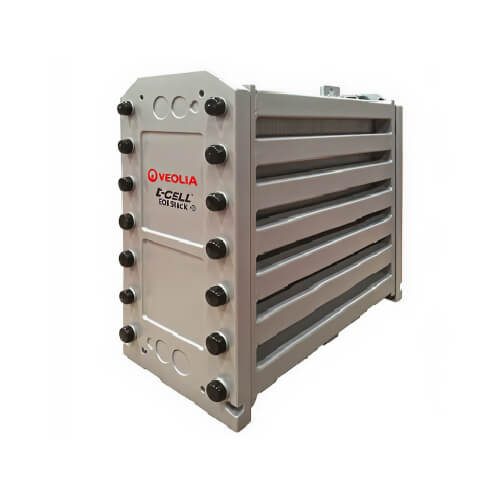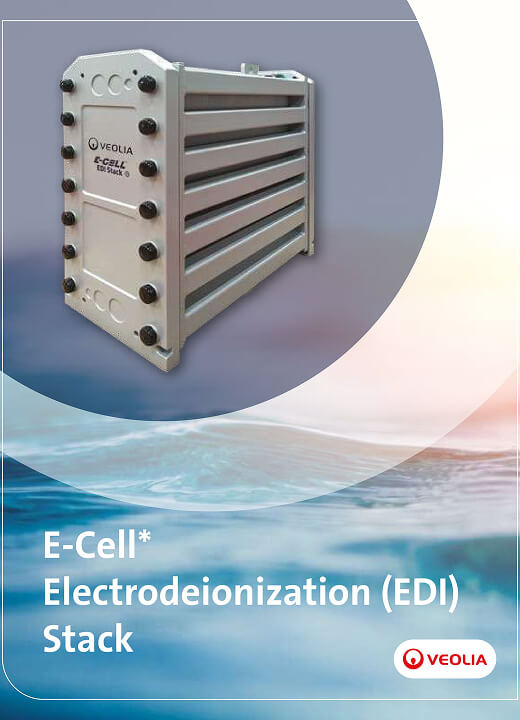E-Cell Veolia Electrodeionization (EDI) Stacks
E-Cell EDI stacks are the core component of a fully engineered system to produce ultrapure and high purity water. Veolia offers several E-Cell EDI stacks with differing capabilities for use in many industries including power generation, semiconductor fabrication, solar panel production, green hydrogen, pharmaceutical manufacturing, and at many other heavy industrial sites. E-Cell EDI stacks manufactured by Veolia are commonly used by original equipment manufacturers (OEMs) building EDI systems in various applications and capacities with Veolia’s technical guidance. Veolia also offers E-Cell EDI stacks to the market through other channels, including direct to end-users for replacement or retrofit to the EDI stacks in their existing systems.

Place your order at AQUAANALYTIC, Dubai.
We will quickly deliver your order to any country.
The E-Cell electrodeionization (EDI) portfolio is an established Veolia product offering with time-tested manufacturing practices and a reputation for providing premium performance including both the highest levels of product water quality and the lowest energy consumption.
Veolia offers the following E-Cell EDI stacks with recommendations on the typical new-build application.
E-Cell Veolia Electrodeionization (EDI) Stacks
| Model | Nominal Product Flow | Applications |
|---|---|---|
| MK-9 | 8.0 m³/h (35 gpm) |
|
| MK-5 | 5.0 m³/h (22 gpm) |
|
| MK-3 | 3.4 m³/h (15 gpm) |
|
| MK-3PharmHT | 3.4 m³/h (15 gpm) |
|
| MK-3MiniHT | 1.14 m³/h (5 gpm) |
|
Electrodeionization is a critical part of the evolution of demineralization systems from several sequential ion exchange vessels and toward membrane-based systems. In such a flow sheet with reverse osmosis, E-Cell EDI systems can replace mixed-bed ion exchange systems and provide reliable production of ultrapure or high purity water.
Additional E-Cell EDI stack benefits:
- Requires no regeneration chemicals which simplifies environmental, health and safety concerns and reduces chemical costs
- Continuous operation minimizing the risk of breakthrough from exhausted resin and simplifies operations by eliminating the need to take a system offline for regeneration
- Reduces facility requirements by having a smaller footprint and lower height requirement than ion exchange, particularly when including supporting equipment such as chemical dosing systems
- No hazardous wastewater discharge and wastes can be easily recycled without the neutralization systems needed for ion exchange
Implementing E-Cell EDI stacks will prove to be more economical than mixed bed ion exchange, offering many customers both reduced initial investment costs and decreased day-to-day operational expenses.
Request a quote
You can trust the 10-year experience of our engineers in striving to provide the best solutions for your business!

